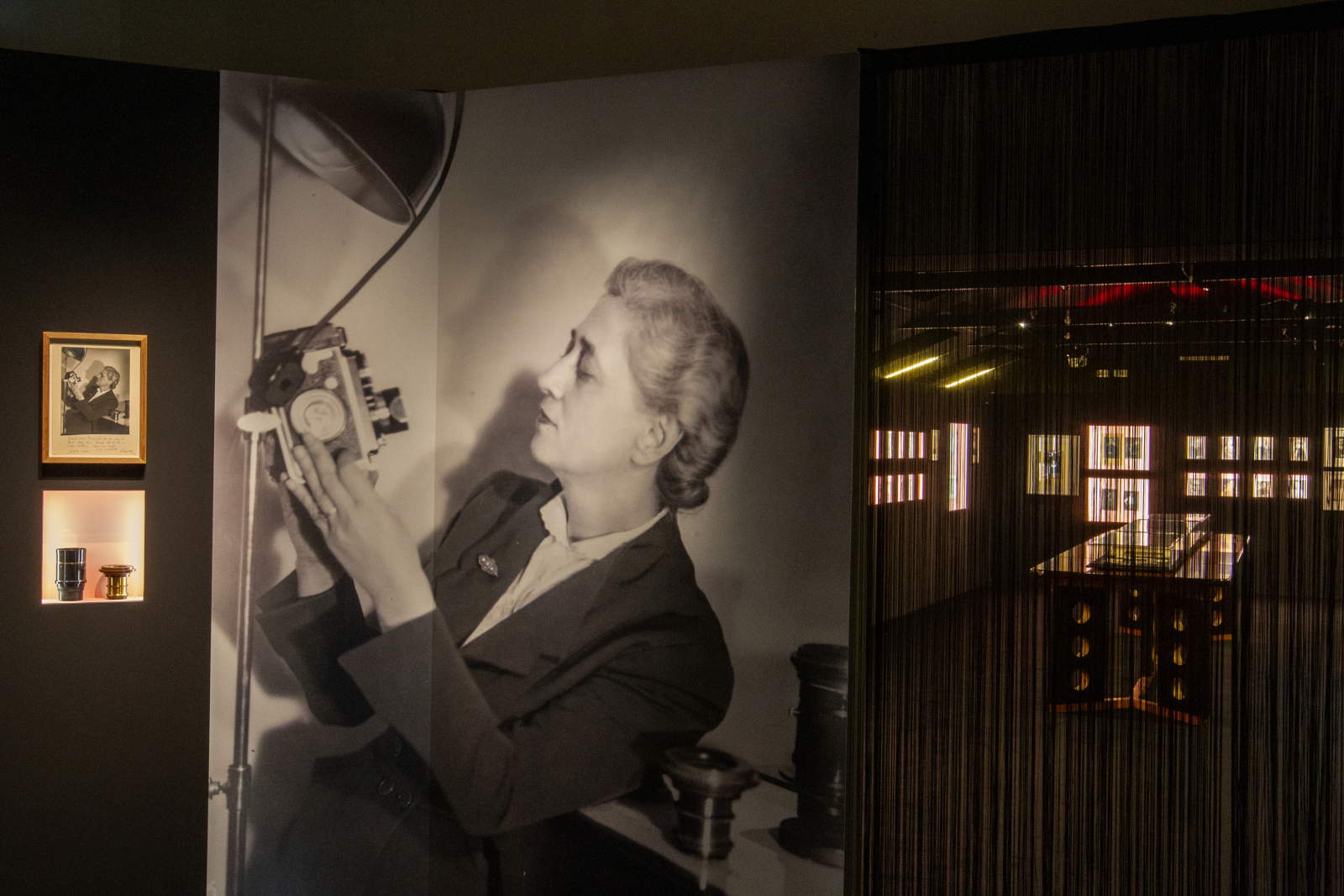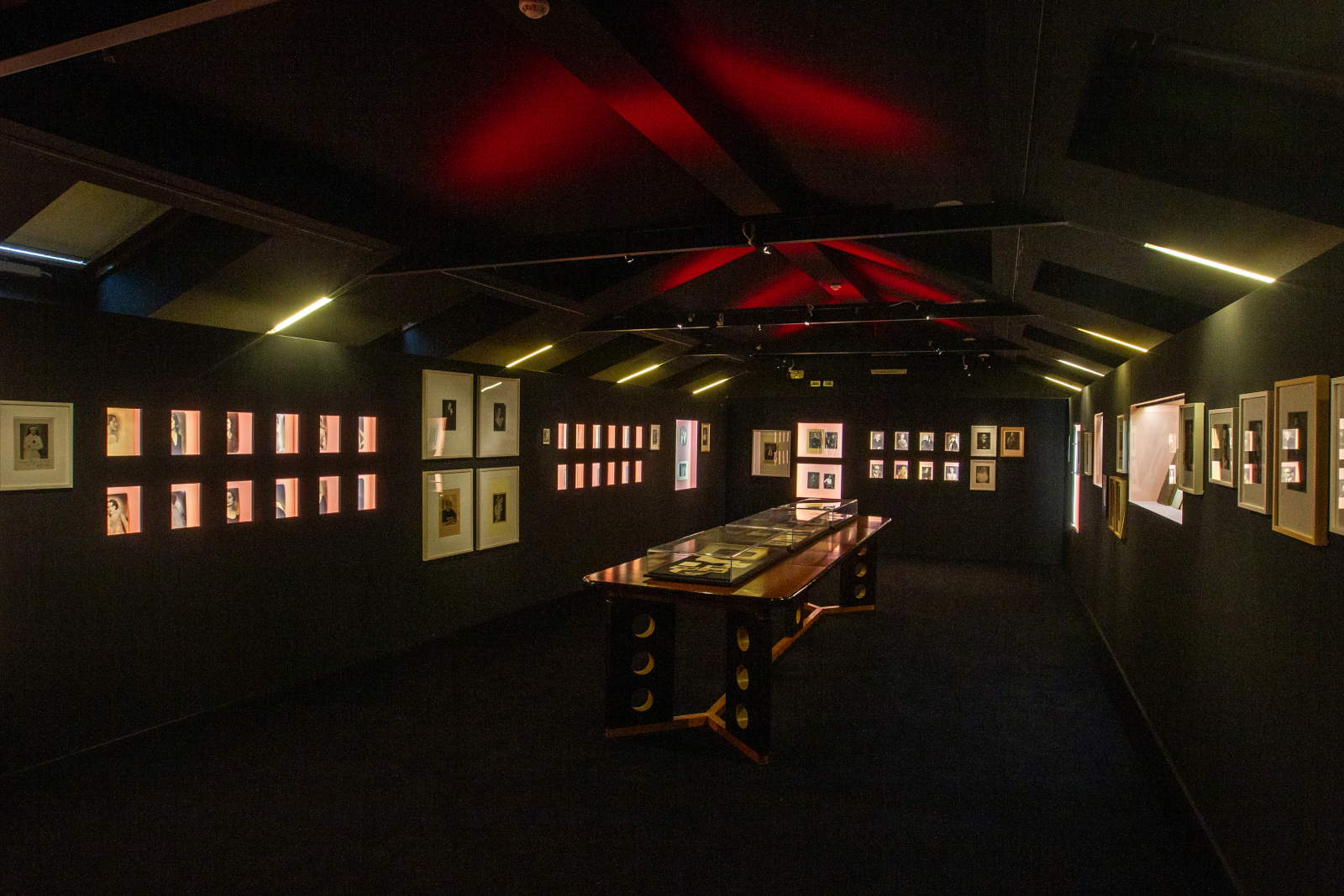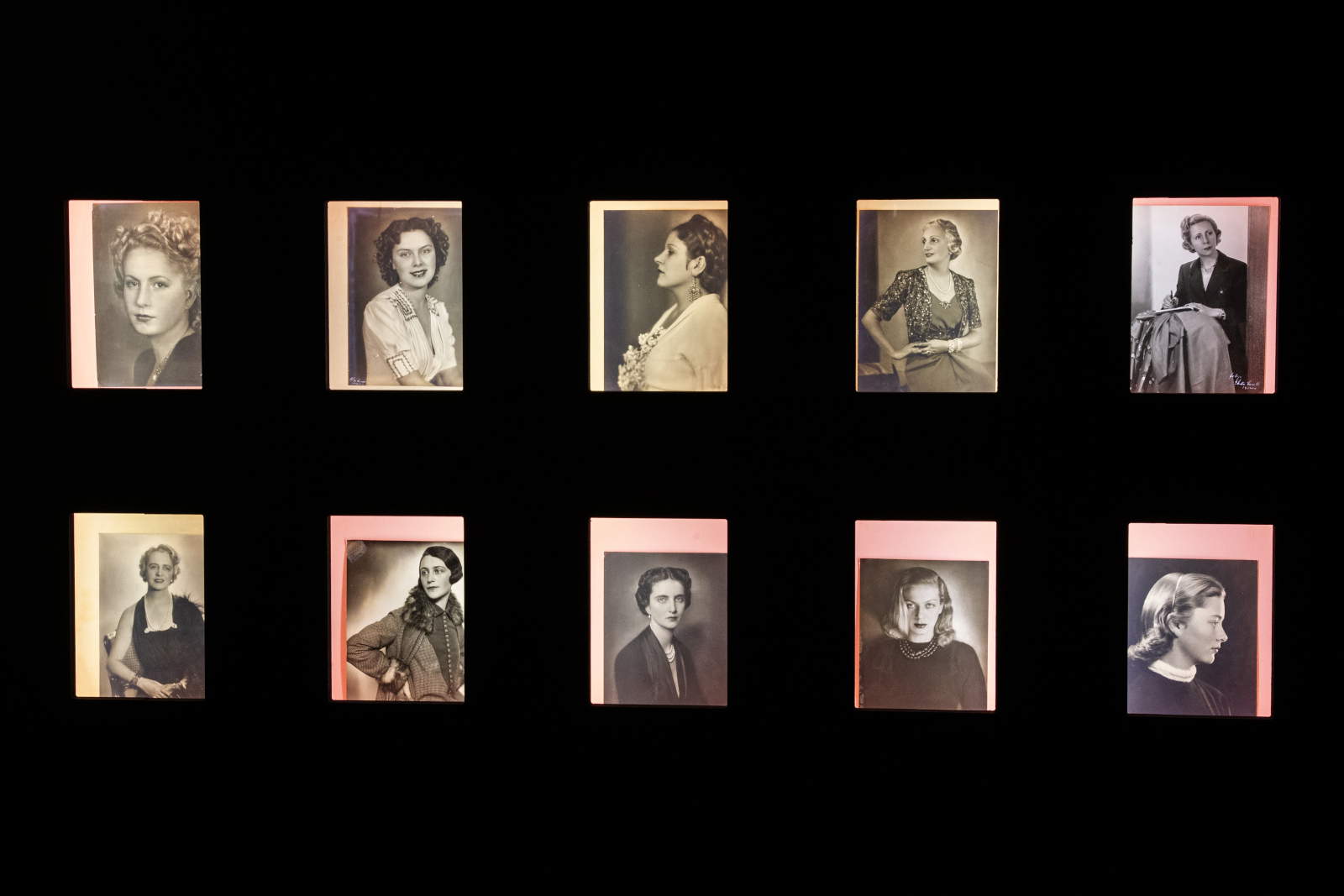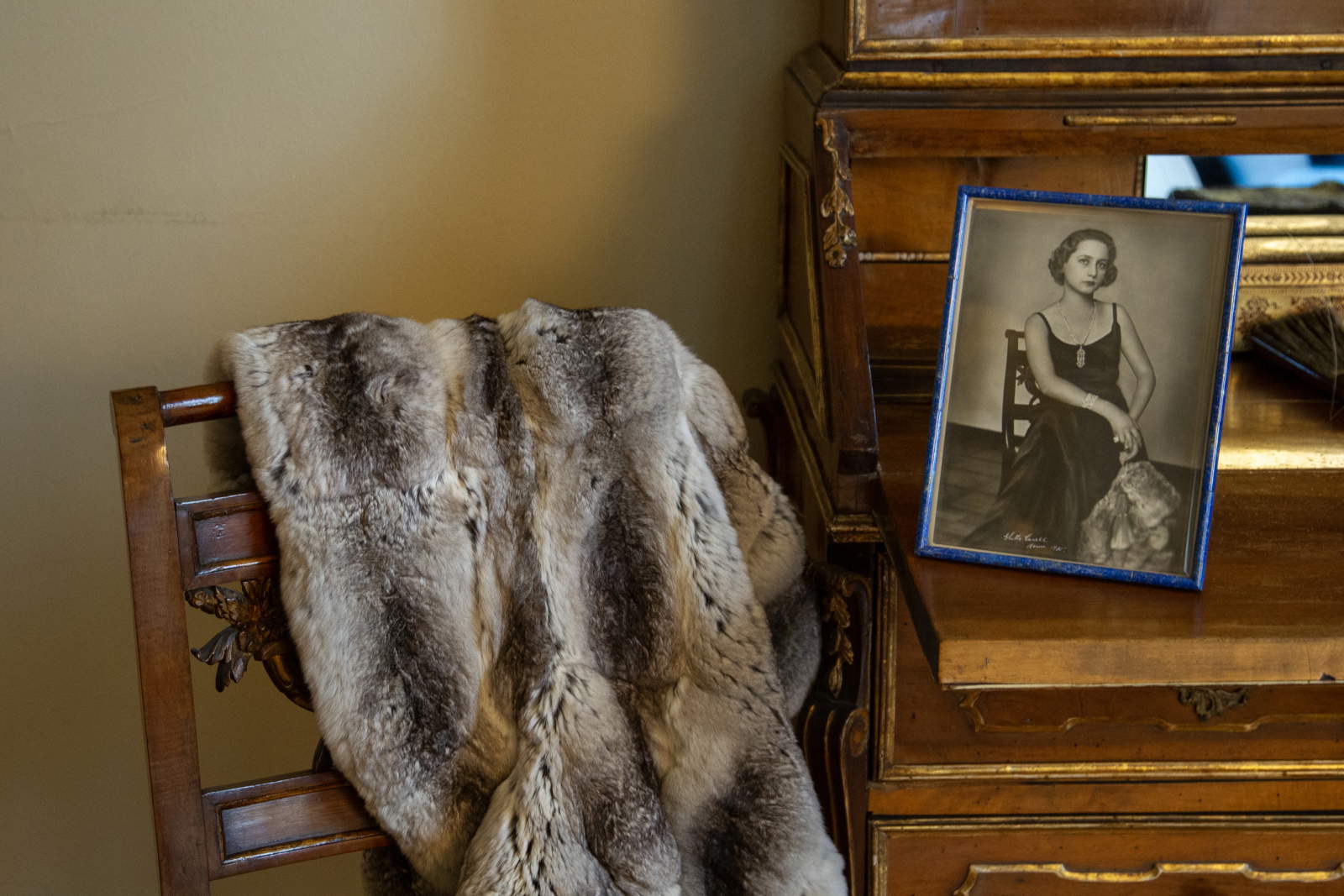The FAI - Fondo per l’Ambiente Italiano ETS presents at Villa Necchi Campiglio, Milan, from May 15 to October 12, 2025, an exhibition dedicated to Ghitta Carell (1899-1972), a portrait photographer who, in Italy during the interwar period, was among the most appreciated and in demand. In front of her camera were the great protagonists of the time: aristocrats, members of high society, leading figures in politics, culture and even the ecclesiastical world, both in Italy and abroad. His portraits, with a refined style that blends classical tradition and modernity, are distinguished by their elegance and ability to evoke charm, prestige and personality. Through faces, postures, clothes, accessories, signatures and dedications, his images compose a fresco of twentieth-century society and culture.
Curated by Roberto Dulio, the exhibition Ghitta Carell. Portraits of the Twentieth Century presents more than one hundred works, including vintage photographs from numerous private collectors, letters, postcards, books, archival materials and original photographic tools, displayed for the first time to the public.
Some of the portraits on display are directly related to Villa Necchi: for example, architect Piero Portaluppi, designer of the mansion, and sisters Nedda and Gigina Necchi, who were the last owners and donated the house to FAI. Giulia Maria Crespi, founder of FAI, is also portrayed at a young age next to her mother. It is from these family ties that the idea for the exhibition at Villa Necchi is inspired.
“Ghitta Carell polishes an expressive synthesis that welds, in dialectical seduction, agreements, tensions and contrasts between avant-garde and tradition, in full harmony with the highest artistic debate of the time,” the curator explains. “In the photographer’s kaleidoscopic figurative mixture leaven suggestions inferred from remote, sometimes antithetical contexts, such as Renaissance and Baroque portraiture and the glamorous taste of the photographs that consecrated the stardom of overseas actors. His subjects, whose clothing and position he studies with meticulousness, appear poised between solemn formalism and Hollywood imagery: memory of the past and expressive eloquence of the present.”
The exhibition design includes a dual mode of display: on the one hand, a museum tour in the exhibition spaces; on the other, a series of photographs arranged in the rooms of the house, lying on the furniture and framed as if they had always been there, harmonizing with the domestic and lived-in atmosphere of the villa.
In fact, Villa Necchi is not conceived as a museum in the traditional sense, but as a home. And this exhibition tells from another point of view the cross-section of 20th-century life, society and culture that this place in itself bears witness to.
“This exhibition is perfect for Villa Necchi, because the high society photographed from the 1930s by Ghitta Carell is the same one evoked by Villa Necchi,” said FAI Cultural Director Daniela Bruno. “That world can be found here: in the avant-garde architecture of Portaluppi, tempered by the style of Tomaso Buzzi; in the art collection that includes the greatest names of the 20th century (donated by Claudia Gian Ferrari), as in the closets that preserve intact clothes and accessories that were fashionable in those years; and in the history of the owners themselves, the Necchi sisters, who had each had their portraits taken twice by Ghitta Carell. We knew we had these photographs, but we did not know how many stories they could tell, when studied and skillfully stitched back to their historical and cultural context as in this exhibition. And it is not just about stories from the past. This exhibition makes us think about general and very topical issues: from the forms of representation of power, to the definition of the canons of beauty; from the seduction of fashions to the manipulation of images, capable of constructing characters and modifying characters, starting with retouching their appearance, as photography increasingly does today, with filters and digital programs, and as art once did.”


Ghitta Carell, born Ghitta Klein in 1899 in the Hungarian county of Szatmár, came from a Jewish family.
During a visit to Florence in 1924, she decided to settle in Italy, choosing the stage name Carell, and launched her career as a photographer. Before long, she came into contact with the country’s high society, political and cultural circles. Over the course of forty years, her lens immortalized such notable personalities as Vittorio Emanuele III and Queen Elena, Umberto and Maria José of Savoy, Margherita Sarfatti, Benito Mussolini, Cesare Pavese, Neville Chamberlain, England’s Queen Mother Elizabeth with her daughter Margaret, as well as Walt Disney, Pius XII, John XXIII, and the Mondadori and Pirelli families.
After his debut in Florence, he opened a studio in Rome, Piazza del Popolo 3, which became a landmark for the elite of the time. During his prime years he also opened a studio in Milan, at 20 Via Conservatorio, where he photographed the Necchi Campiglio family and Portaluppi himself.
Carell uses traditional equipment, such as a large camera with tripod from the Luigi Piseroni company in Milan-visible in the exhibition-with 18x24 cm plates. On some occasions, he relies on portable models of the same format. Right from the start she distinguished herself for her talent, especially in the field of portraiture, where she combines photographic sensibility and pictorial inspirations, particularly from the Renaissance tradition.
The photographer carefully takes care of every detail: composition, framing, light and details. After the shot, she intervenes directly on the image by retouching the plates with drawing tools-pencils, paints, brushes, scrapers-making her studio look more like a painter’s than a photographer’s.
With the enactment of the racial laws in 1938, Carell’s life was also disrupted. Although she is not directly persecuted, her name begins to be removed and censored. She spends the war years in hiding between Rome and Milan. After the war she resumes her activities. In 1969 she moves to Haifa, where her sister and niece reside. Here he died in 1972, leaving some prints and photographic plates to the Italian Cultural Institute, which granted sponsorship to this exhibition.
The exhibition takes its cue from the presence of portraits of the Necchi sisters in the house, taken by the photographer herself. These photographs, displayed in their original location, are joined by other portraits placed in the second floor lobby, arranged on a center table with the original frames. The exhibition continues in the checkroom, where the technical aspect of Carell’s photographic work is explored in depth, and extends to the mansion’s attic, an exhibition space that houses additional photographs, documents, letters, postcards, books and vintage videos, offering a broader look at the artist’s cultural, social and intellectual context.
There is no official catalog, but the exhibition is accompanied by two volumes edited by Roberto Dulio: A Worldly Portrait. Photographs by Ghitta Carell (Johan & Levi, 2013) and Ghitta Carell’s Portraits (Five Continents, 2024), publications that have rekindled critical interest in a work often read through stereotypes or ideological filters.
FAI is also launching a Call for portraits, or a widespread search through social and digital channels, to find photographs of Ghitta Carell preserved in the homes of Milanese families. To report a work, it is necessary to write to mostraghittacarell@fondoambiente.it in order to submit images for the attention of the curators, until October 3, 2025. Selected photographs will be requested on loan for the exhibition. The exhibition is held under the patronage of the Lombardy Region, the City of Milan and the Italian Cultural Institute of Haifa.
Hours: Wednesday through Sunday, 10 a.m. to 6 p.m.
In the images, exhibition set-ups. Photo: Barbara Verduci, 2025 © FAI


 |
| Milan, at Villa Necchi Campiglio an exhibition dedicated to Ghitta Carell, portrait photographer between the two wars |
Warning: the translation into English of the original Italian article was created using automatic tools. We undertake to review all articles, but we do not guarantee the total absence of inaccuracies in the translation due to the program. You can find the original by clicking on the ITA button. If you find any mistake,please contact us.